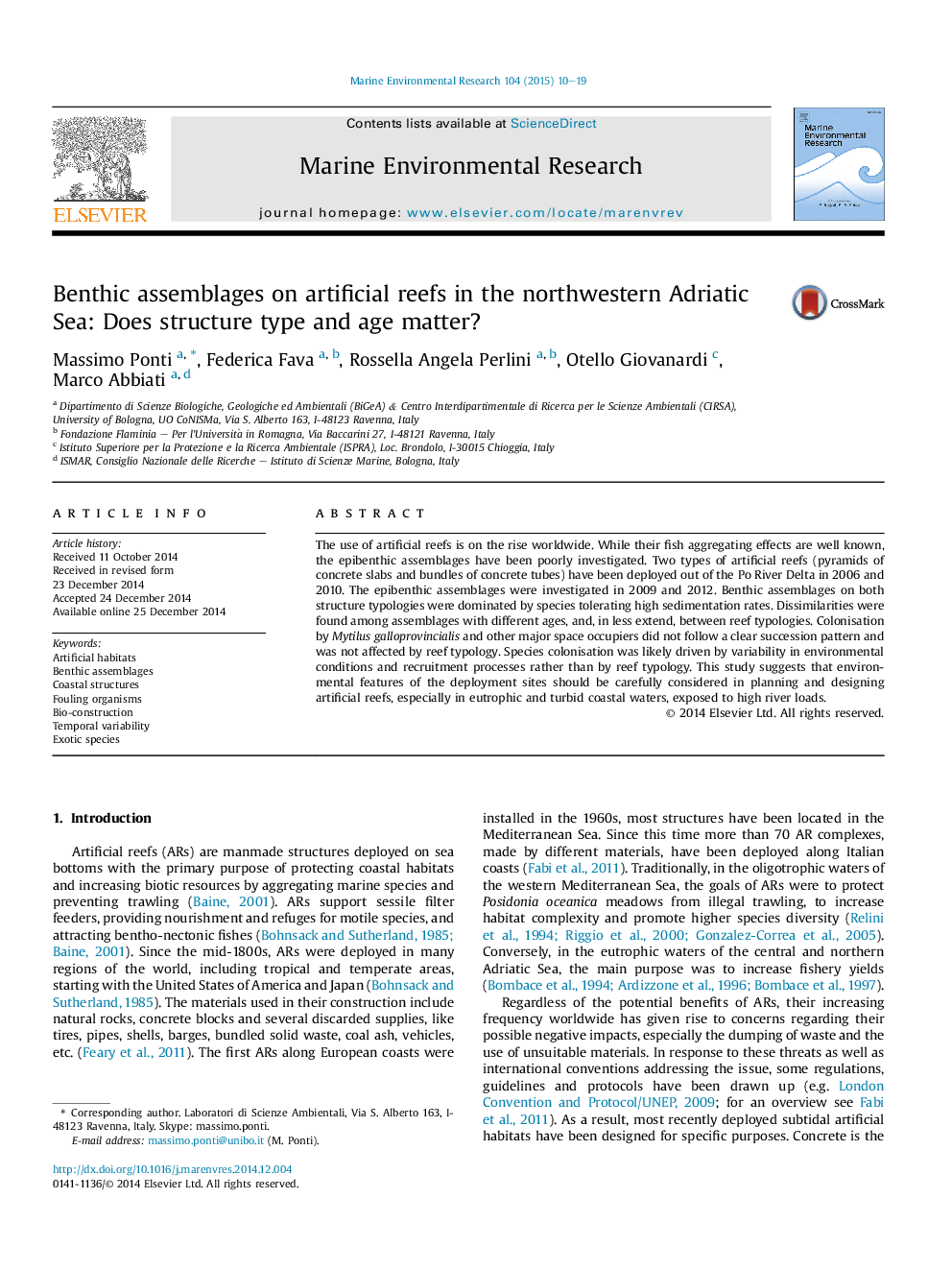| Article ID | Journal | Published Year | Pages | File Type |
|---|---|---|---|---|
| 4550710 | Marine Environmental Research | 2015 | 10 Pages |
•Two artificial reef typologies differing in shape and material were compared.•Benthic assemblages were investigated 2 and 5 yrs after reef deployment.•Colonisation of the reefs did not follow a consistent succession pattern.•Differences in reef typology had limited effects on assemblage structures.
The use of artificial reefs is on the rise worldwide. While their fish aggregating effects are well known, the epibenthic assemblages have been poorly investigated. Two types of artificial reefs (pyramids of concrete slabs and bundles of concrete tubes) have been deployed out of the Po River Delta in 2006 and 2010. The epibenthic assemblages were investigated in 2009 and 2012. Benthic assemblages on both structure typologies were dominated by species tolerating high sedimentation rates. Dissimilarities were found among assemblages with different ages, and, in less extend, between reef typologies. Colonisation by Mytilus galloprovincialis and other major space occupiers did not follow a clear succession pattern and was not affected by reef typology. Species colonisation was likely driven by variability in environmental conditions and recruitment processes rather than by reef typology. This study suggests that environmental features of the deployment sites should be carefully considered in planning and designing artificial reefs, especially in eutrophic and turbid coastal waters, exposed to high river loads.
